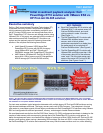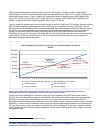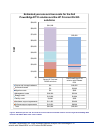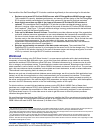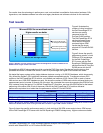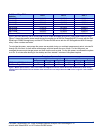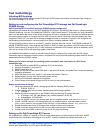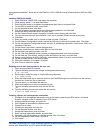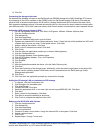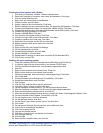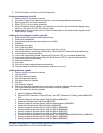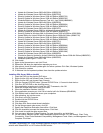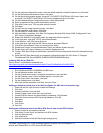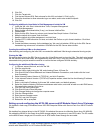
4
Principled Technologies, Inc.: Initial investment payback analysis: Dell PowerEdge R710
solution with VMware ESX vs. HP ProLiant DL385 solution
Four benefits of the Dell PowerEdge R710 solution contribute significantly to the cost savings for this solution:
• Replaces up to seven HP ProLiant DL385 servers with HP StorageWorks MSA30 storage arrays.
The increased I/O capacity, database performance, and memory efficient design of the Dell PowerEdge
R710 solution enables consolidation of multiple older systems for the specific workload we tested.
2
• Uses slightly more than one-fifth of the power of the seven HP ProLiant DL385 solutions it
replaces. The consolidated Dell PowerEdge R710 solution provides considerable energy savings
because it requires a little more than 20 percent of the power of the older HP ProLiant DL385 solutions
that it replaces.
3
(See Figure 7.) We gain additional savings in energy costs because the test workload
requires at most half the shared storage array.
• Frees up five Windows Server® licenses. Consolidation provides software savings if the organization
maintains software assurance agreements or can reuse elsewhere the licenses that consolidation frees.
We do not include license costs for either solution, as the enterprise would already have paid for the
licenses used on the older solution and would transfer them to the new solution. We do include the costs
of ongoing software agreements. For the calculations in this paper, we assume that the target
organization maintains software agreements for OS and database software and that it can choose to
renew or cancel them at the time of consolidation.
4
• Requires approximately one-seventh of the data center rack space. The consolidated Dell
PowerEdge R710 solution requires 2u of rack space for the server and 3u for the storage array. The older
HP ProLiant DL385 solution requires 5u for each of the seven server-and-storage-array pairs, for a total
of 35u; by contrast, the single Dell R710 solution consumes only 5u.
Workload
We conducted our testing using DVD Store Version 2, an open-source application with a back-end database
component, a front-end Web application layer, and a driver layer that operates as the middle tier and actually
executes the workload. DS2 models an online DVD store. Simulated customers log in; browse movies by actor,
title, or category; and purchase movies. The workload also creates new customers. Browsing movies involves
select operations, some of which use SQL Server 2008 full-text search and some of which do not. The purchase,
login, and new customer stored procedures involve update and insert statements, as well as select statements.
The workload’s main reporting metric is orders per minute.
Because our goal was to isolate and test database server and storage, we did not use the Web application layer.
Instead, we ran the driver application on client machines directly via its command-line interface. To simulate a
heavily loaded environment, the load-generating systems ran with no think time, blasting requests as quickly as
the server could handle them. We used the default DS2 parameters and setup configuration, with the exceptions
we note in the DVD Store setup section in the Test methodology section of this report.
For client machines, we used high-end desktop systems running ESX Build 148592. Each of these client
machines ran a single instance of DS2, which spawned 32 threads. This simulated a heavily loaded environment.
Our goal was to represent the consolidation of older servers facing a demanding workload, so we adjusted the
DVD Store thread count to 12 on the older server in order to get the server to about 80 percent processor
utilization throughout the test.
We used four internal hard drives (two RAID1) on all servers, installing the OS on one volume and using the other
volume for DB logs. We configured the external storage as one large volume for the OS virtual machines and 14
25GB LUNs to be used for SQL Data volumes (2 for each of our 7 VMs).
2
The replacement factor is the number of VMs that ran on the Dell PowerEdge R710 solution, where on average each VM was equivalent to
or better than the performance of the HP ProLiant DL385 solution. The Test results section of this report details those results.
3
We multiply the replacement factor times the average power of the older server and storage solution and compare that result to the power of
a single Dell PowerEdge R710 server and Dell EqualLogic PS6000 storage array.
4
Our calculations include the costs for Windows Server 2003 R2 Enterprise Edition software assurance for the older solution and for the
upgraded Windows Server 2008 Enterprise Edition for the Dell PowerEdge R710 solution. We assume the licenses transfer between the
solutions. We base this savings claim on the seven licenses required for seven older solutions versus two licenses, each supporting four VMs,
for the Dell PowerEdge R710 server.



